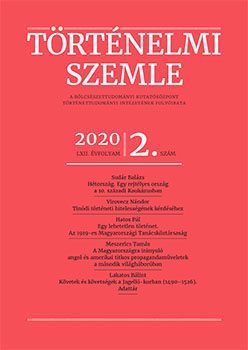Hétország. Egy rejtélyes ország a 10. századi Kaukázusban
Sevenland. A Mysterious Country in the 10th Century Caucasus
Author(s): Balázs SudárSubject(s): 6th to 12th Centuries
Published by: Magyar Tudományos Akadémia Bölcsészettudományi Kutatóközpont Történettudományi Intézet
Keywords: Sevenland; early Hungarian history; Caucasus; Taman Peninsula; al-Maszúdí
Summary/Abstract: The early Magyars were visibly attached to the number seven, mentioned with regard to them by both external and internal sources. “Sevenmagyar” [Hétmagyar] was the term applied to the leaders of the Conquest period and thus, perhaps, to the entire community. While numbers frequently appear in group denominations among the peoples of the Steppe, the number seven is rare. The reference by Al-Masudi, an Arab polyhistor writing in the middle of the tenth century, in his description of the Caucasus to a land called Sevenland is therefore highly interesting. His knowledge about this land is fairly limited, a conspicuous fact in his case; the source of this ignorance may have been the recent move of the Sevenland people to this area. The land itself can be localised to the wider region of the Taman Peninsula, to the western feet of the Caucasus, and may have spread northward from the Kuban. It is precisely this region where archaeological finds possibly connected to the Magyars have recently been found. The hypothesis that the description of Al Masudi refers to a Magyar community is thus a reasonable one.
Journal: Történelmi Szemle
- Issue Year: 2020
- Issue No: 02
- Page Range: 213-221
- Page Count: 9
- Language: Hungarian

